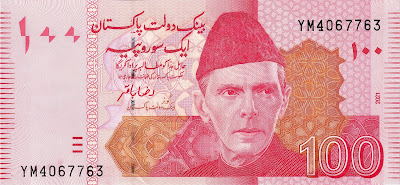The Tajik Ruble holds a significant place in the history of Tajikistan, serving as its official currency during the tumultuous period following the collapse of the Soviet Union. However, its story is one of transition and transformation, as Tajikistan eventually replaced the Ruble with its own currency, the Somoni.
Originating from the Russian Ruble, which was the common currency across the Soviet Union, the Tajik Ruble was introduced in 1991 following Tajikistan's declaration of independence. At the time, Tajikistan, like other former Soviet republics, faced the challenge of establishing its economic identity and stability in the wake of political upheaval.
The Tajik Ruble symbolized the nation's newfound sovereignty, but its journey was fraught with economic challenges. The dissolution of the Soviet Union led to widespread economic turmoil, including hyperinflation and currency devaluation across many newly independent states. Tajikistan was no exception, experiencing severe economic hardship and civil unrest during the early 1990s.
As Tajikistan struggled to stabilize its economy, the Tajik Ruble faced significant depreciation, eroding its value and undermining public confidence in the currency. Inflation soared to alarming levels, further exacerbating the economic crisis gripping the nation.
In response to the pressing need for monetary reform, Tajikistan embarked on a path towards currency redenomination. In 1994, the Tajik Ruble was officially replaced by the Tajikistani Somoni, named after the medieval Persian ruler Ismail Samani. This transition aimed to restore stability and confidence in Tajikistan's monetary system while asserting the nation's cultural and historical identity.
The introduction of the Somoni marked a new chapter in Tajikistan's economic history, signaling a departure from the turmoil of the past and a commitment to building a more resilient financial infrastructure. Despite initial challenges, the Somoni gradually gained acceptance and stability, bolstered by prudent monetary policies and efforts to strengthen the banking sector.
Today, the Tajikistani Somoni serves as the cornerstone of Tajikistan's economy, facilitating domestic transactions and fostering economic growth. Its value in the market reflects a complex interplay of domestic and global factors, including inflation rates, exchange rates, and geopolitical developments.
As of recent data, the exchange rate hovers around 11 Somoni per 1 USD, indicating a relatively stable value compared to the turbulent years following independence. While challenges persist, including poverty, unemployment, and dependence on remittances, Tajikistan has made strides in promoting economic development and financial stability.
The journey from the Tajik Ruble to the Somoni symbolizes Tajikistan's resilience and determination to overcome adversity. It underscores the importance of sound monetary policies, prudent fiscal management, and international cooperation in fostering economic progress and prosperity.
In conclusion, while the Tajik Ruble may have faded into history, its legacy lives on in the evolution of Tajikistan's monetary system. The transition to the Somoni reflects the nation's commitment to forging its own path towards a more prosperous future, grounded in stability, resilience, and self-determination.

.jpeg)
.jpeg)
.jpg)
.jpg)
.jpg)
.jpg)
No hay comentarios:
Publicar un comentario